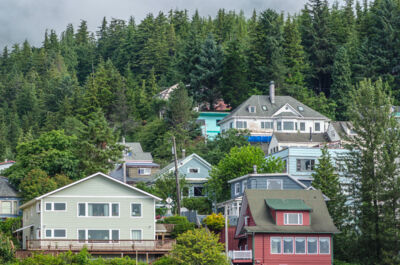Housing Rental Market Facing Challenges

The housing rental market has been challenging for people across the country due to a variety of factors. Low inventory of available rentals, growing inflation, and higher interest rates have played roles in making it difficult to find affordable housing.
According to HouseCanary, a national real estate data firm that recently released a report for the first half of 2022, “rents have continued to rise at the fastest pace in decades” with an average national cost of $2,495 to rent.
Statistics from the U.S. Bureau of Labor Statistics show that average rental costs went up 4.7% in the first half of 2022, the highest six-month increase in the last 10 years. In the first nine months of 2022, costs were up 5.37%. In the months of July, August, and September alone, costs increased by 6.7%.
Alaska Market Trends
Alaska has seen similar trends. In March, Alaska Housing performed its annual rental market survey and found general alignment with national trends – though there were variances across individual markets.
Overall, rental vacancy rates in Alaska are at 4.3%, the lowest they’ve been in a decade. As vacancy rates are going down, median rents have steadily gone up across the state from 2016 to 2022, with an average increase of 10.64%.
At the same time, the number of homes being used as vacation rentals has spiked statewide. In January 2015 there were only about 500 listings with an approximate occupancy rate of 5%. In May 2022 there were nearly 7,500 listings with an occupancy rate of almost 70%. This can contribute to lower overall inventory of available rentals.

Differences in Regional Markets
Regions across the state are seeing different impacts to their individual rental markets.
For example, two years ago Fairbanks had a vacancy rate of nearly 19% but today it is down to 7%. In Mat-Su, the rental vacancy rate actually went up in 2022, but it still is the lowest in the regions surveyed by Alaska Housing at 2.86%.

Median Rents Differ by Market
Similarly, median rents have increased across the state since 2016 but in some regions they have been stable – and in the case of Kodiak, actually decreased. In locations such as Juneau, Mat-Su and the Kenai Peninsula, increases in median rents were only between half of a percentage point and just over 3%. But Anchorage’s median rent went up by 10.3% and Fairbanks soared to 17%.
While each region has its own nuances, across both Alaska and the United States the rental market remains dynamic and difficult to predict. Without a significant change in current market dynamics, the trend may continue.

![Alaska Housing Finance Corporation [Logo]](/application/themes/ahf2/images/logo.png?v=2)